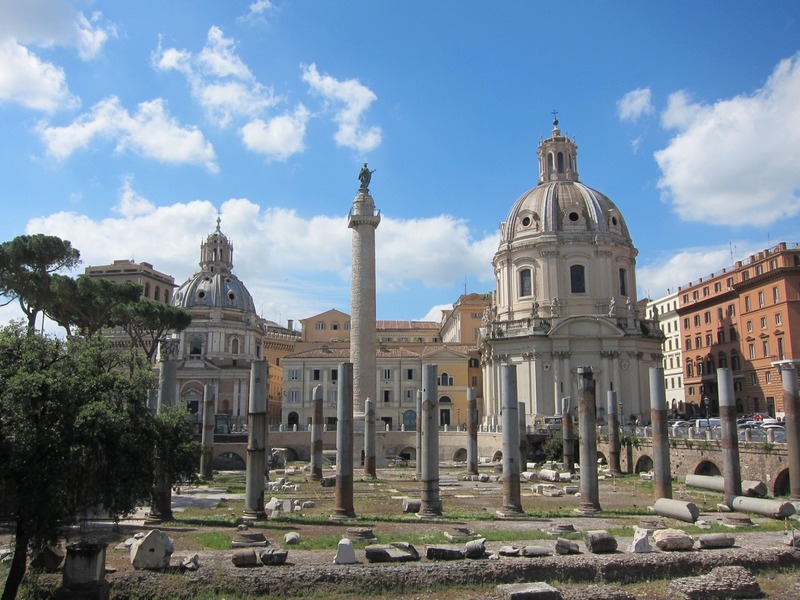Visibility
The Column for Trajan holds great tension between its grandeur and extraordinary detail.1 Its reliefs are not easily visible from the ground, yet are highly detailed. However, viewers in antiquity would possibly have seen colored reliefs, and likely used balconies of nearby buildings for a higher view.2 For example, the image at left shows a view of the Column through the Basilica Ulpia. Scholars have also discovered vertical connections between scenes. For instance, the depiction of a positive omen at the start of the war vertically aligns with the personification of Victory halfway up the Column, and the Dacian king's suicide at the top. Even so, writers in antiquity seem to have been most interested in the monument’s grandeur.3 In late antiquity, the Column for Trajan was noted more for its use as a belvedere than a historical text.4 Perhaps the Column for Trajan offers something different for different viewers—size and scale for some, detailed history for others.
_________________________
1 Francesco de Angelis, “Sublime Histories, Exceptional Viewers: Trajan’s Column and its Visibility,” in Art and Rhetoric in Roman Culture, eds. Jas Elsner and Michel Meyer (Cambridge: Cambridge University Press, 2014), 89.
2 de Angelis, “Sublime Histories,” 92.
3 de Angelis, “Sublime Histories,” 106.
4 de Angelis, “Sublime Histories,” 107.
